The Kilimanjaro Climb via the Rongai Route over eight days presents a compelling blend of adventure and natural beauty. This route, often overlooked by climbers, meanders through lush rainforests and stark volcanic landscapes, offering a gradual ascent that’s suitable for various skill levels. With thoughtfully arranged accommodations and a dedicated support crew, trekkers find comfort and camaraderie along the way. As they approach the summit, anticipation builds for the awe-inspiring sunrise at Uhuru Peak. What challenges and rewards await those who embark on this remarkable journey?
Good To Know
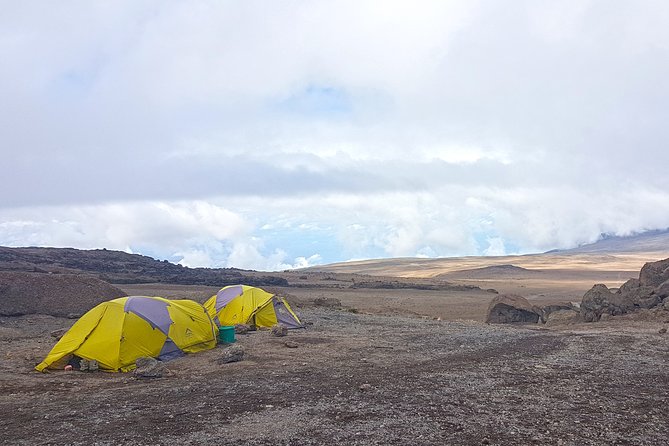
- The Rongai Route offers a unique, less-traveled path to Kilimanjaro, featuring stunning landscapes and diverse wildlife.
- The 8-day itinerary includes gradual acclimatization, enhancing your chances of successfully reaching Uhuru Peak.
- Accommodation includes a cozy hotel stay and comfortable tented lodging with essential amenities during the trek.
- Experienced guides and support crew ensure safety, monitor climbers’ well-being, and provide nutritious meals throughout the journey.
- Prepare for varying altitudes and terrains by layering clothing, wearing sturdy hiking boots, and packing essential gear.
Overview of the Rongai Route
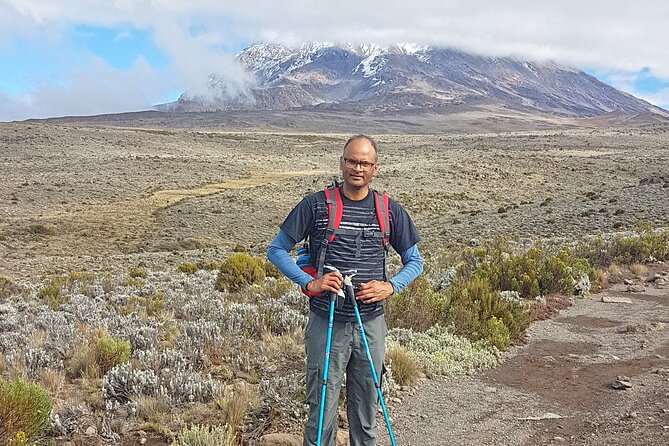
The Rongai Route offers a unique and less-traveled path to the summit of Kilimanjaro, allowing climbers to experience stunning landscapes and diverse ecosystems while ascending Africa’s highest peak.
Starting from the northern side of the mountain, this route presents breathtaking views of lush forests, alpine meadows, and stark volcanic landscapes.
As trekkers ascend, they encounter a variety of wildlife, including vibrant bird species and unique flora. The gradual incline makes it suitable for climbers of varying experience levels, providing ample opportunity for acclimatization.
Unlike the more crowded routes, Rongai’s serene environment fosters a deeper connection to nature and the mountain itself.
Find more activities and experiences we've covered in Kilimanjaro.
Daily Itinerary Breakdown
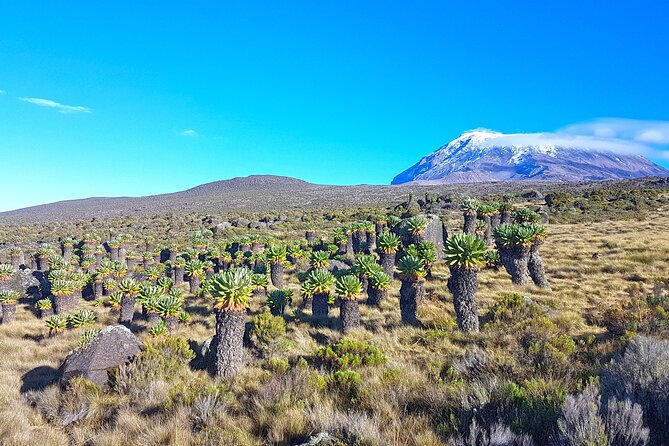
Each day of the Kilimanjaro climb via the Rongai Route offers a carefully planned itinerary designed to enhance acclimatization and showcase the mountain’s stunning landscapes.
Trekkers embark on an unforgettable journey that gradually ascends through diverse ecosystems, from lush rainforests to barren alpine deserts.
The daily itinerary includes:
Day 1: Arrival at the trailhead and a gentle trek through the rainforest, spotting unique wildlife.
Day 3: A challenging ascent to the moorland zone, where expansive views unfold.
Day 5: A trek to the high camp, allowing climbers to adjust before the summit push.
Day 7: The final ascent at night, culminating in breathtaking sunrise views from Uhuru Peak.
This structured approach ensures a rewarding experience.
Accommodation Details
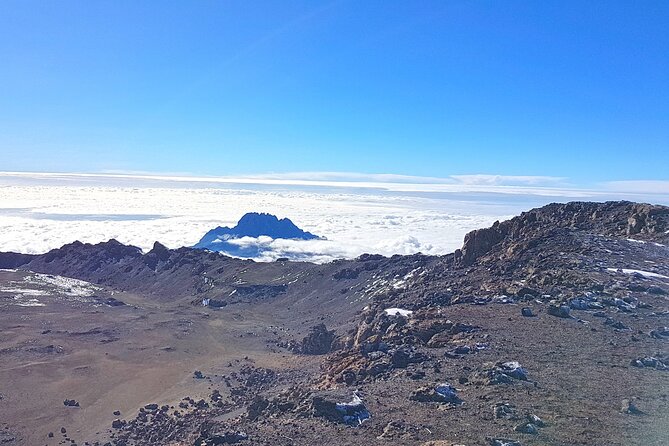
Accommodation during the Kilimanjaro climb via the Rongai Route combines comfort and practicality, ensuring climbers are well-rested and prepared for each day’s trek.
Participants enjoy two nights in a cozy, 3-star hotel, like the Aishi Machame Hotel, where they start their adventure with a hearty breakfast.
As they ascend, climbers transition to tented accommodations, using durable, four-season North Face VE25 tents designed to withstand the mountain’s conditions.
Each evening, climbers settle into their tents, equipped with four-inch thick sleeping mats that provide a supportive rest.
Dining tents offer a communal space for meals, fostering camaraderie among trekkers.
This thoughtful arrangement guarantees a balance of rest and readiness, crucial for tackling Kilimanjaro’s challenging terrain.
Included Services and Amenities
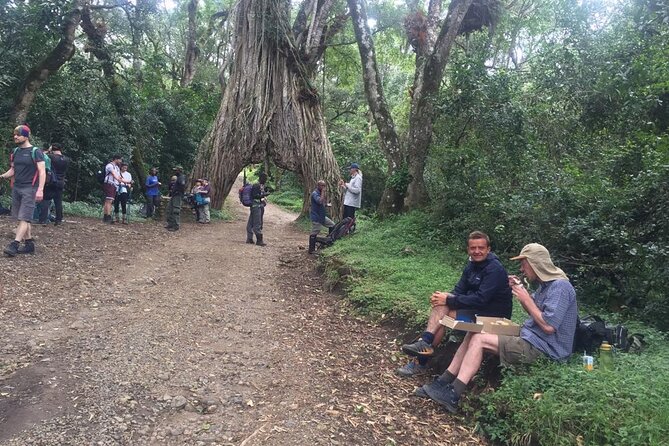
Climbers can look forward to a host of included services and amenities that ensure a seamless and enjoyable experience on their ascent of Kilimanjaro via the Rongai Route. These services cater to every need, allowing trekkers to focus on the breathtaking scenery and their personal journey.
Airport Transfers: Private vehicle pickups and drops at Kilimanjaro International Airport.
Accommodation: Two nights in a 3-star hotel with breakfast, plus comfortable tented lodging during the trek.
Meals and Drinks: All meals prepared by professional cooks, along with hot beverages and water throughout the hike.
Camping Gear: High-quality tents, sleeping mats, and essential camping equipment provided for a cozy experience.
These amenities truly enhance the adventure.
Support Crew Responsibilities
The dedicated support crew plays a crucial role in ensuring a successful and enjoyable climb, providing expertise, motivation, and assistance every step of the way.
Comprised of experienced English-speaking trek leaders, assistant guides, porters, and skilled cooks, this team works tirelessly to enhance the climbing experience.
The trek leader navigates the route, sharing knowledge about the mountain and its environment.
Assistant guides monitor climbers’ well-being, offering encouragement and support when needed.
Porters manage the heavy loads, setting up camp and ensuring all gear is ready for each day’s journey.
Meanwhile, cooks prepare nutritious meals, fueling climbers for the challenges ahead.
Together, this dedicated crew creates a supportive atmosphere, allowing climbers to focus on the adventure of reaching Kilimanjaro’s summit.
What to Expect on the Climb
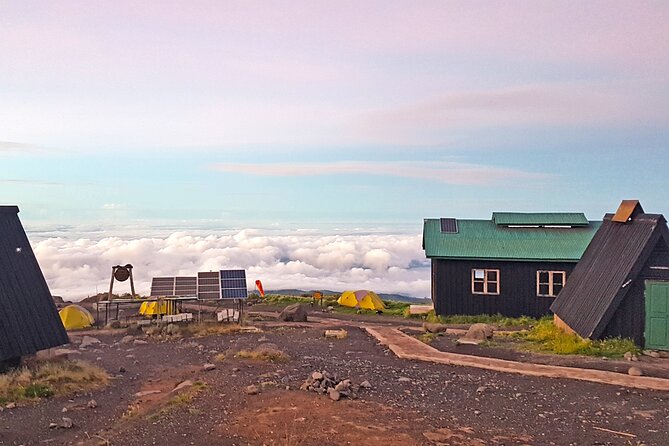
Expect breathtaking landscapes, diverse ecosystems, and a challenging yet rewarding journey as adventurers embark on the iconic Kilimanjaro climb via the Rongai Route. The trek offers an unforgettable experience filled with stunning views and unique habitats.
Vibrant Flora and Fauna: Climbers will encounter lush rainforests, alpine moorlands, and desolate volcanic landscapes, each teeming with wildlife.
Stunning Sunrises: Each morning reveals spectacular sunrises that illuminate the mountain and surrounding valleys.
Cultural Encounters: Travelers may interact with local communities, gaining insight into their rich traditions and customs.
Physical Challenges: The ascent tests climbers’ endurance, with varying altitudes and terrains that demand both mental and physical strength.
These elements combine to create an unforgettable adventure on Africa’s highest peak.
Preparation and Packing Tips

Preparing for the Kilimanjaro climb via the Rongai Route involves careful planning and thoughtful packing to ensure a comfortable and successful trek.
Climbers should prioritize layering clothing to adapt to the changing temperatures, packing moisture-wicking base layers, insulating mid-layers, and waterproof outer shells. Sturdy, well-broken-in hiking boots are essential for tackling rugged terrain. A quality sleeping bag rated for cold weather will enhance comfort at night.
Plus, trekkers should bring a reusable water bottle, sunscreen, and a hat for sun protection. Snacks like energy bars can provide much-needed fuel during the ascent.
Lastly, don’t forget personal items such as toiletries, a headlamp, and a first-aid kit to stay prepared for any unforeseen circumstances along the journey.
Safety and Health Considerations
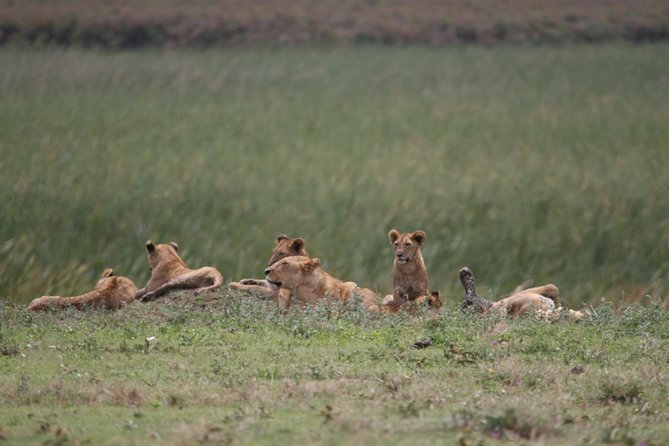
Ensuring safety and health during the Kilimanjaro climb is crucial, as altitude sickness and changing weather conditions can pose significant challenges for trekkers. To mitigate these risks, climbers should follow these essential considerations:
Acclimatization: Gradually ascending allows the body to adjust to higher altitudes, minimizing the risk of altitude sickness.
Hydration: Staying well-hydrated is vital; trekkers should drink plenty of water throughout the journey.
Weather Awareness: Monitoring weather conditions helps in making informed decisions about when to trek or rest.
Medical Preparedness: Carrying a comprehensive medical kit and knowing how to use it can be lifesaving in emergencies.
Frequently Asked Questions
What Is the Best Time to Climb Kilimanjaro via the Rongai Route?
The best time to climb Kilimanjaro typically falls between January to March and June to October. During these months, climbers enjoy drier weather, clearer skies, and optimal conditions for reaching the summit successfully.
Are There Any Age Restrictions for Participants on This Trek?
For this trek, there’s no strict age limit, but participants should possess moderate fitness. Typically, adventurers between 18 to 60 years old find the experience manageable, ensuring a safe and enjoyable journey for everyone involved.
Can I Extend My Stay in Tanzania After the Climb?
After the climb, travelers can definitely extend their stay in Tanzania. They often explore vibrant cities, stunning beaches, or wildlife safaris, enriching their adventure and creating unforgettable memories beyond the mountain experience.
Is It Possible to Arrange a Private Trek for a Group?
Yes, it’s possible to arrange a private trek for a group. They can customize the itinerary to fit their needs, ensuring a unique and memorable experience tailored specifically to their preferences and group dynamics.
What Types of Payment Methods Are Accepted for the Booking?
For the booking, they accept major credit cards, PayPal, and bank transfers. Travelers can choose the method that suits them best, ensuring a smooth and secure payment process for their adventure.
The Sum Up
In just eight unforgettable days, climbers on the Rongai Route experience the breathtaking beauty of Kilimanjaro, traversing diverse ecosystems while enjoying a gradual ascent.
With comfortable accommodations and a dedicated support crew, adventurers are well-equipped to reach the majestic Uhuru Peak.
As the sun rises over Africa’s highest mountain, climbers celebrate not just the summit, but the camaraderie and memories forged along the way.
This journey promises to leave an indelible mark on every trekker’s heart.
More Tour Reviews in Kilimanjaro
Looking for something different? Other Kilimanjaro activities we've written about
- 3 Best 3 Day Tours In Kilimanjaro
- 9 Best Tours In Kilimanjaro
- 7 Best 4 Day Tours In Kilimanjaro
- 24 Best Safari Tours In Kilimanjaro
- 4 Days / 3 Night Safari to Ngorongoro / Serengeti
- 7 Days / 6 Nights Climb Kilimanjaro Via Marangu Route
- Lake Eyas Cultural Tour, 3 Days Safari
- Full-Day Private Kilimanjaro Day Trip With Lunch
- Kilimanjaro Climb via Rongai Route- 8 Days
- 8 Days Tanzania Cultural Experience
- 5 Days Marangu Route
- 6 Days Trekking Mount Kilimanjaro Through Machame Route.
